The Arts Society South West London 2019 Programme
Illustrated lectures on a wide range of topics relating to the decorative and fine arts
The Arts Society South West London promotes the appreciation and study of decorative and fine arts through lectures and visits. It also encourages heritage volunteering and support of Young Arts.
This year for ther Young Arts initiatives they are offering free entry to lectures for any sixth formers (with student /oyster card identification). Sixth formers just need to come to a lecture with proof of the their status such as their student oyster card to get in free.
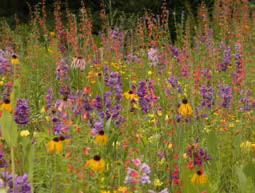
On 10th February the lectures continue with Timothy Walker on the SUBTLE ART OF COLOUR IN ENGLISH GARDEN DESIGN
This talk looks at how to apply the principles of colour theory in designing a border, but it also looks at the ways in which a border is different from a painting. However, it goes further than this and looks at how work of the likes of Turner, Monet, Rothko, Jackson Pollack, and Hockney evolved in parallel with ideas about what a garden or border should look like.
Timothy Walker was director of the University of Oxford Botanic Garden for 26 years during which time the Garden won four Gold Medals at the Chelsea Flower Show, one of which was for an exhibit explaining the science of using colour in the garden. Since 2014 he has been the College Lecturer in Biology at Somerville College Oxford.
The South West London branch which has been running for over 40 years has a strong active membership but welcomes visitors to its monthly lectures on the second Monday of the month at Dryburgh Hall, Putney Leisure Centre.
Speakers are leaders in their field and the subjects are varied as you see from the programme below. Doors open at 7.30 for a 8.00 pm start. A short waiting list is held for those interested in becoming members.
9 March
The Genius of Raphael
Lecturer: James Lindow
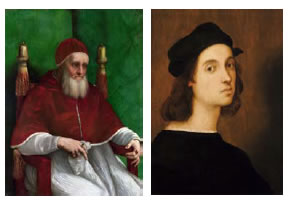
This lecture charts the meteoric rise to prominence of Raphael (1483–1520).
It analyses his early work in the Perugino workshop; his sojourn to Florence
in 1504 and his key commission for the Papacy who summoned the artist
to Rome in 1508 so cementing the fame of this phenomenal talent. 1500
marks the start of the High Renaissance and the emergence of Raphael as
a great Master.
James Lindow was
the first Renaissance
PhD from the Royal
College of Art and
the V&A. He has
convened and
presented at
international
conferences; lectures
widely in the UK
and overseas and is
currently a fine art
underwriter in the
City. He has written
articles on diverse aspects of the Renaissance, and his book entitled The
Renaissance Palace in Florence: Magnificence and Splendour in Fifteenth
Century Italy was published to widespread critical acclaim.
11 May
Historic Graffiti – the Hidden Story
of the Hopes, Fears and Desires
of a Nation
Lecturer: James Wright
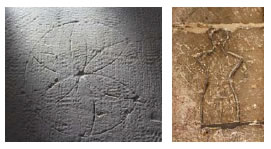
Modern graffiti is often
seen as transgressive
and moronic. However,
look closely at the walls
of our historic buildings,
trees, caves and
rockfaces and you will
see a world of graffiti
left that illuminates the
psychology of our
ancestors. The study of historic graffiti enables us to hear the lost voices of
ordinary individuals through their images of daisywheels, ships sailing
across the walls, knights drawing their swords, demons stalking the
stonework and every animal imaginable….
James Wright FSA is an award-winning archaeologist and accredited
lecturer with both the Arts Society and WEA. He has over fifteen years of
lecturing experience and has talked to a wide variety of organisation
including the Gresham College, Shakespeare400 and the National Trust.
8 June
Turner vs Constable:
The Great British Paint-off!
Lecturer: Nicola Moorby
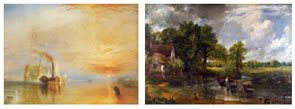
The story of the epic rivalry between the two giants of British art, JMW Turner
and John Constable. As unlike in background and temperament as their
paintings were in style, these two creative geniuses transformed the art of
landscape during the nineteenth century. This lecture examines their ‘signature’ paints; how they overcame the ‘technical challenge’ of sketching
from nature and how their differing approaches fared in the competitive
arena of the Royal Academy.
Nicola Moorby is an independent art historian specialising in British art
of the nineteenth and early twentieth centuries. Formerly a curator and
researcher at Tate Britain, she has worked on a number of exhibitions and
publications on JMW Turner including, How to Paint Like Turner (Tate
Publishing, 2010) and the Tate’s new online catalogue of the Turner Bequest.
13 July
The Genius of Beethoven
Lecturer: Peter Medhurst

Famously, every morning of his adult life, Beethoven measured out exactly
60 coffee beans for his breakfast. A man who is capable of such discipline
over a cup of coffee, can surely apply that exactness elsewhere in his life; and
in Beethoven’s case, it was applied to his ompositions. In fact, the detail
found in his music is often so subtle, that
most people don’t even know it’s there.
The lecture explores Beethoven’s genius as
a writer of music, at the same time setting
his extraordinary story against the
backdrop of 19th century warfare,
revolution and dramatic social changes.
Peter Medhurst appears in the UK and
abroad as a musician and scholar, giving
recitals and delivering illustrated lectures
on music and the arts. He studied singing
and early keyboard instruments at the
Royal College of Music and at the
Mozarteum in Salzburg.
14 September
Dickens, Lawrence and Zhivago:
David Lean’s Art of Cinema
Lecturer: Neil Faulkner

Drawing on new insights, this
lecture will use the films of renowned director David Lean
to explore the art of cinema.
Cinematic images are modern
art forms. In the ‘golden age’
of cinema, filmmakers had to
construct sets to represent
landscapes, townscapes, and
interiors.
Sometimes they used
paintings and photographs,
sometimes they built scale
models, and sometimes they constructed full-size replicas. In each case, they
created an art installation that they then captured in celluloid images.
Neil Faulkner is an archaeologist, historian, writer and occasional
broadcaster. He lectures widely in archaeology, ancient history, classical
civilisation, modern history, and current affairs. He is a director of several
archaeological projects and he is currently setting up new field projects to
explore the Second World War battlefield of Cassino and to pioneer the
archaeological investigation of cinema.
12 October
150 years of London
Underground Design
Lecturer: Mark Ovenden

Love it or loathe it,
you can’t fail to be
impressed by
London’s Tube.
It was the world’s
first underground
railway and grew
into one of the
biggest and
arguably best designed. In his talk the lecturer will show how the tube and its
various facets, such as the architecture of tube stations or the tube diagram,
fabric designers for seats influenced not only transport systems worldwide, but
also impacted on our daily lives – Southfields station even inspired the Daleks.
Design historian Mark Ovenden is an internationally respected author,
presenter, broadcaster and lecturer whose best-selling books have been
translated into many languages. Ovenden brings joyful insight, warmth,
humour and accessibility to what might on the surface appear somewhat dry,
geeky or technical subjects. His infectious enthusiasm in print, on TV, radio
or delivering talks, enthralls and informs audiences.
9 November
With a Little Help from their Friends:
The Beatles and their Artists
Lecturer: Barry Venning

A journey through the
60s in music and
images, following the
Beatles from the
Hamburg Reeperbahn in 1960 to Abbey Road
in 1969. The band was
fascinated by the
visual arts. With the
help of friends such as
the artists Peter Blake,
Jann Haworth and
Richard Hamilton, the
photographer Bob Freeman and the gallery owner, ‘Groovy Bob’ Fraser,
they also turned album design into an art form in its own right.
Barry Venning is an art historian specialising in British art since 1700,
with a particular interest in the work of JMW Turner, on whom he has
published and spoken extensively. He has also twice contributed to BBC
documentaries on the artist. He works for the Open University and has
lectured on British art in Europe, Australia and New Zealand.
14 December
A RIGHT ROYAL CHRISTM AS:
How our Royal Family has
celebrated Christmas from the
Middle Ages to the Present
Lecturer: Roger Askew
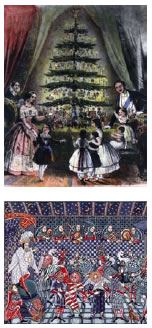
Our royal families have always celebrated
Christmas. William the Conqueror made sure
of his claim to the English throne by being
crowned in Westminster Abbey on Christmas
Day 1066. Feasting on a spectacular scale
characterised medieval Christmases –
including crane’s flesh, peacocks and herons.
Present-giving ranged from the extravagant – the City of London presented Richard II
with a camel and a pelican – to the witty –
Mrs. Thatcher sent the Queen a pair of yellow
washing-up gloves having seen Her Majesty
doing the dishes without any.
Roger Askew was a chorister at Wells Cathedral
School and a choral scholar at Magdalen
College, Oxford. He combined a teaching
career with professional singing in London,
and after a further degree in Music became
Director of Music at Daniel Stewart’s and
Melville College in Edinburgh. He is President
Emeritus of The Stoke Poges Society and
Chairman of the Arts Society Windsor.
Membership:
Subscriptions for 2020 are £45 single and £80 for joint membership.
If you pay by Standing Order, please ensure that you are paying the correct amount.
If you pay by cheque, please write one immediately, dated 1 December 2019, and send it to the Treasurer, Gill Grunwald, 187 Sheen Lane, London SW14 8LE. Telephone: 020 8878 9480.
Only one reminder will be sent.
Remember that the Arts Society South West London will benefit if you are able to make this payment into a Gift Aid payment. Please ask our Treasurer for the Gift Aid Form.
January 24, 2020
Related links
|
